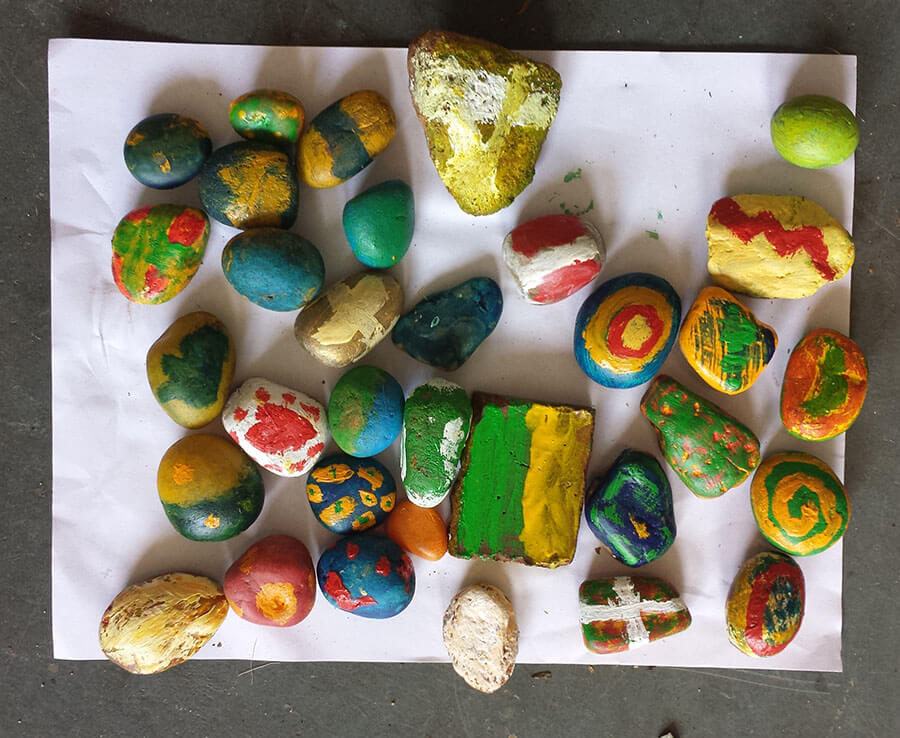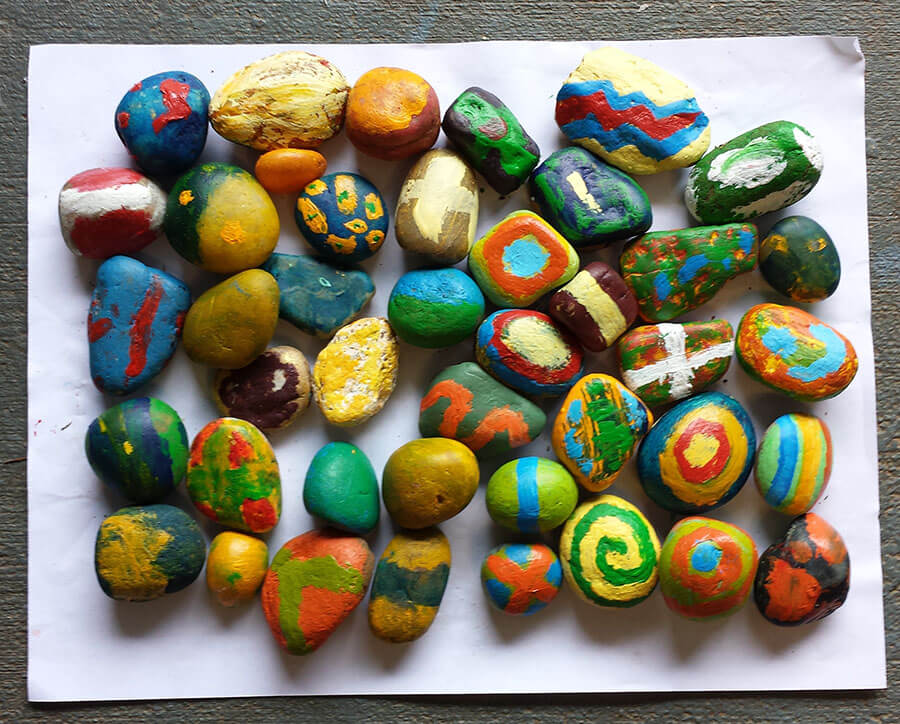I spend afternoons with my son, and now that the summer heat is here in full force, it makes doing things outdoors during our time less than ideal. Fortunately, I remembered that I had a box of studio-grade acrylic paints that I had saved from years ago, and I knew that my son liked finding rocks, seeds, and other materials outside . So I proposed that we find and paint rocks, and he thought it was a great idea.
It was a great idea. The student-grade paint didn’t contain toxic cadmium oxides like my studio stuff, and we could do the painting in the relative cool of his mother’s garage. And like any activity, there were many opportunities for teaching basic life and work skills if I paid attention.
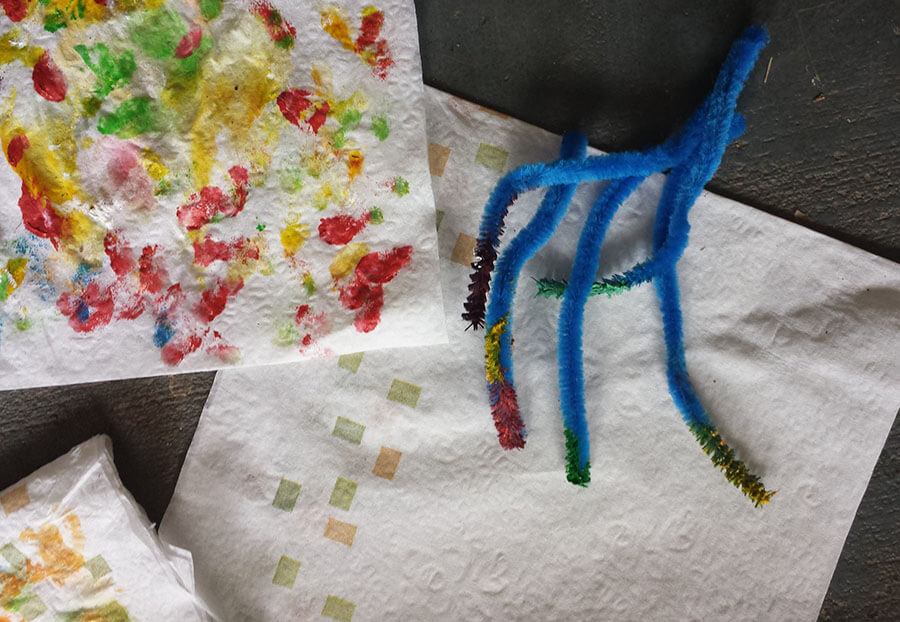
Improvised Materials
The first opportunity came in the form of a problem, which is how most opportunities come. The problem was that we didn’t have any brushes with us.
Rather than squander our activity time by going to the store and buying brushes, we used the problem as an opportunity to find what we could use as improvised brushes and experiment with them. We quickly discovered that pipe cleaners made excellent brushes for what we were doing, and he had a large box of them in his toys.
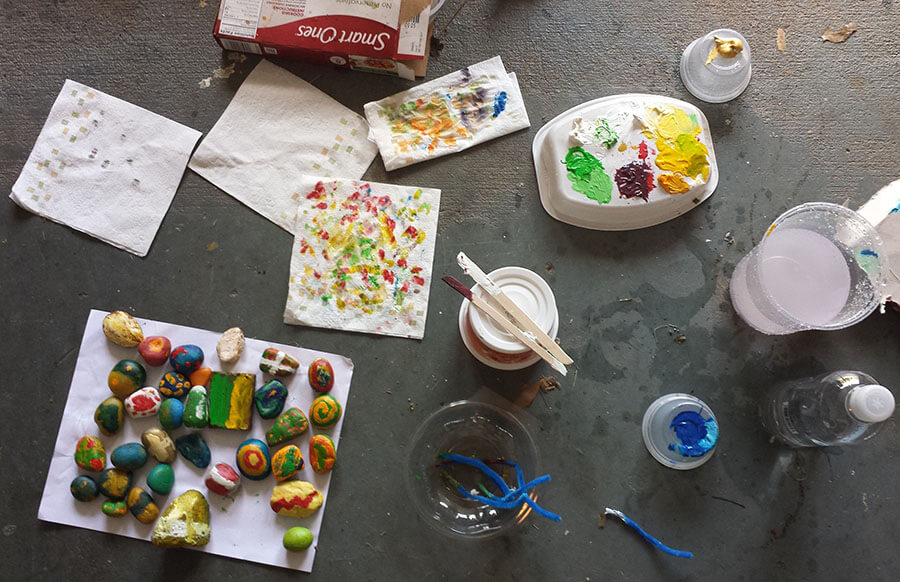
Organizing a Workspace
The second thing I got to teach my son was how to lay out a workspace so that all materials and tools were within arm’s reach. I also got to teach him how to handle the paint without getting it all over himself and how to flick water onto the paint to keep it from drying out.
There were also all the points of how to share tools and a workspace without interfering too much with the work of another person, which is particularly important when materials are messy or dangerous. Since my son is an only child, these soft skill and people skill lessons are particularly important, and I try to emphasize them as much as the technical stuff in our activities.
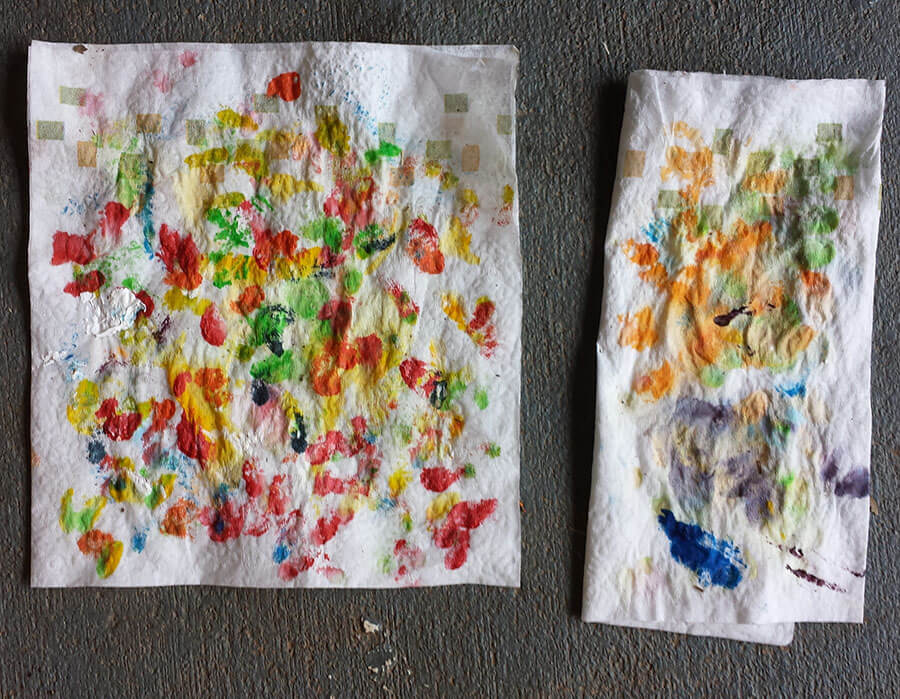
Always Teach Thrift
Use things from the recycling bin as much as possible. It teaches your kid quite a bit all at once: innovation, value of resources, and the basic concept that not everything comes from a retail store.
I also explained to my son that when we cleaned our brushes in the water between colors, we first wanted to wipe most of the acrylic paint off on old paper or rags so that as little paint as possible got into the rags. That is done not just to keep the water useful for cleaning but also to keep the paint from being poured down the drain.
Painting and Art
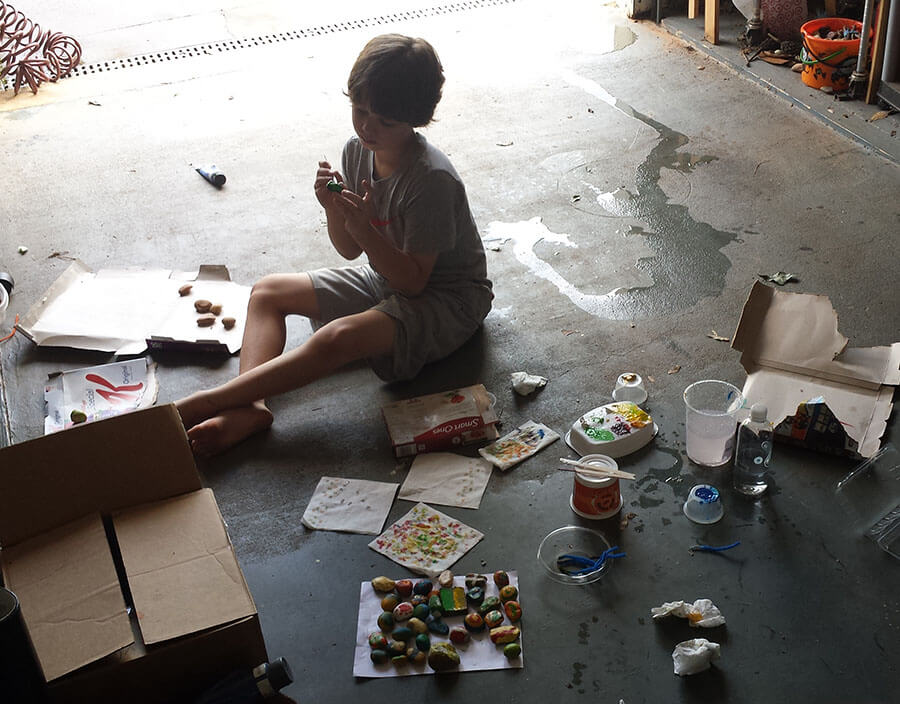
I got to talk with my son about mixing colors and layering colors and being sloppy or soft with the brushstrokes to let lower colors partially peak out. I got to talk with him about these things while he was experimenting with them. It was fun and wonderful.
